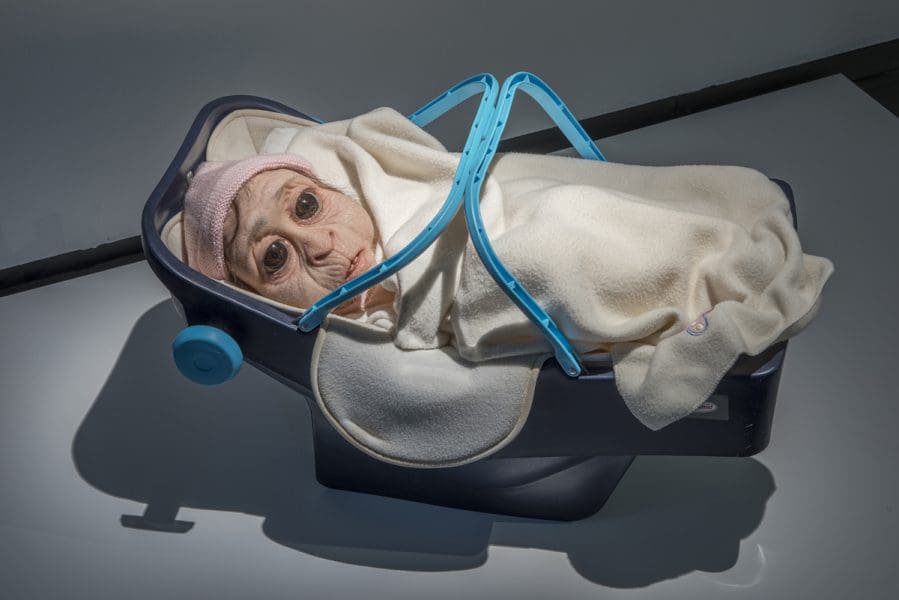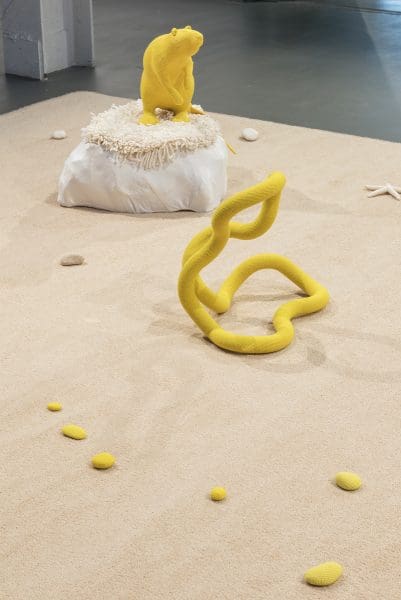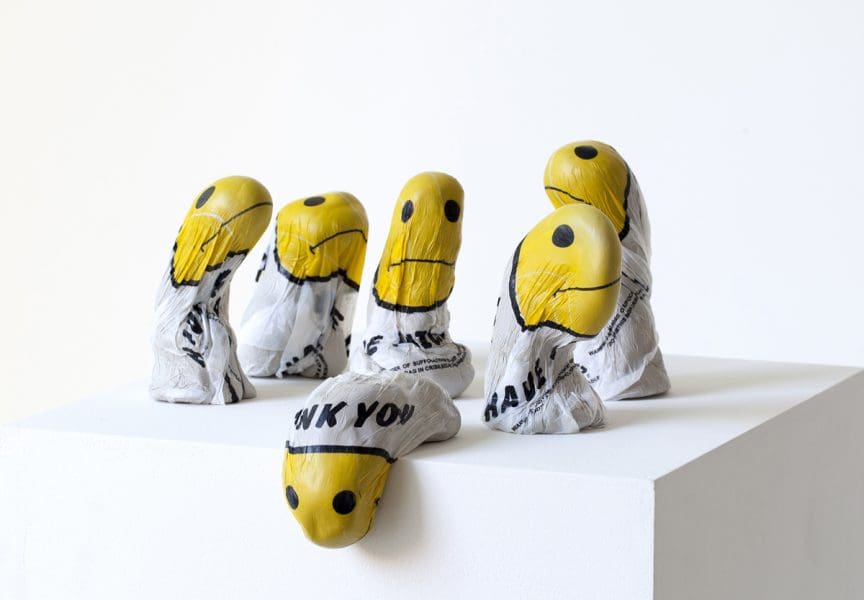
Finding New Spaces Together
‘Vádye Eshgh (The Valley of Love)’ is a collaboration between Second Generation Collective and Abdul-Rahman Abdullah weaving through themes of beauty, diversity and the rebuilding of identity.






Up until relatively recently Western sculpture was hard and robust, generally made for outdoor public display and the expression of noble or grand modernist sentiments. Although 20th century avant-garde artists explored new materials (such as Meret Oppenheim and her fur-covered cup, saucer and spoon, Object, 1936) it wasn’t until the late 1960s that works made from finer matter, such as fabrics, were placed under the classification of ‘sculpture’ as opposed to ‘objects.’
The initial inspiration for the exhibition was the desire to create discord with the material properties of the Casula Powerhouse Arts Centre, where this touring show was first presented. “The idea for Soft Core began when I was researching the history and architecture of Casula Powerhouse for an exhibition called Solid State,” says curator Micheal Do.“The artworks in the exhibition reflected the remnants of the building’s architecture; think cold, hard tensioned steel staircases, concrete slabs and niches. Soft Core was developed as almost an antidote, or foil to Solid State. In a sense, Soft Core introduced the soft core into the hard shell of Casula Powerhouse.”
Soft Core was also inspired by small, common human experiences. “Softness is a mutable quality that we experience at so many different stages in our lives,” says Do. “We interact with it at the beginning, such as the softness of a blanket we use to swathe a baby. It then returns with the tender softness of a first kiss, and then again with the soft fuzz of ageing eyes.”
The works in the exhibition tease out different themes and facets of ‘softness’ through existing works by Brook Andrew, Mikala Dwyer, Tony Oursler, Michael Parekowhai, Patricia Piccinini, Todd Robinson, Kathy Temin, Louise Weaver and Paul Yore, and newly commissioned pieces by Tully Arnot, Tully Moore, Koji Ryui and Simon Yates.
“Some works are literally soft to touch, whilst others look soft but are in fact hard to touch. Other artworks use softness as a disguise to tackle hard subjects drawn from our networked and crazed lives, whilst other artworks require electricity to activate their softness.”
Anthropomorphism permeates many works on show. “Todd Robinson’s melting balloons are well proportioned, bulbous and firm,” says Do. “They come to life, taking on a quiet coquettishness as they casually cling, as they drape and hug the steel supports to which they’ve been attached.”

Similarly, Koji Ryui works to inflect found objects with personality, such as his sculptures of smiley faced plastic bags filled with moulded concrete. Kathy Temin’s The Pet Tomb, furniture-esque sculptures made with faux fur, look like shaggy animals in the minimalist tradition.
As a whole, Soft Core develops thinking around sculptural practice that operates in the ‘negative condition’ beyond hardness.
Soft Core
Shepparton Art Museum
27 January – 18 March 2018
Ararat Regional Art Gallery
31 March – 29 July 2018
Wagga Wagga Art Gallery
11 August – 28 October 2018
Toowoomba Regional Art Gallery
10 November – 27 January 2019
Caboolture Regional Art Gallery
15 February – 20 April 2019
Cairns Regional Gallery
3 May – 23 June 2019
Perc Tucker Regional Gallery
6 September – 3 November 2019